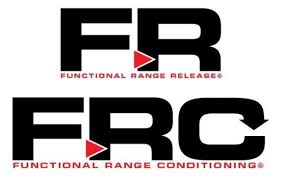FRC – “Move to Heal”
How do you recover from Injury?
Most would say Rest Ice Compression (wrapping/ splinting/ bracing) with some Elevation. I have always wondered about this method. While the jury is out regarding ice and health along with immobilization of the joint.
Though we can all agree on, if we want to Heal we need oxygen flow to the injured area. Why is motion crucial for recovery? What are safe actions to maintain and recreate strength through full range? How can we recover back to sports faster?

Take an ankle sprain. Immediately at outset of injury the body begins to send cells to clean and heal/ reconstruct your body. Oxygen flow is the most crucial. Oxygen is used to create new tissue (new You) The Body does one thing really well, heal itself. Activity, load specifically, determines how the body will heal and to what level of function. Baring all neurological or serious injury, healing is how the body functions after injury.
According to Davies Law (1) soft tissue (skin, joints, ligaments), all model along impose demand. When effort is given in a specific direction the soft tissue while adapt. Correlating positively with Wolffs Law (2), describing bones modeling along imposes demand. Both laws of biomechanics shows how crucial it’s to create when demand, or load, is specifically controlled the body will grow your command.
FRC (Functional Range Conditioning) uses PAIL/RAIL’s (Progressive/ Regressive Isometric Loads) to create the demand (load) on the joints, ligaments, and bones in a specific direction delivering an increased resilience of the joint. Combined with passive range Hovers, the joint and tissues are challenged to actively maintain a range only accessible from a passive starting point. Active isometric loads are not only a pillar of the FRC system but also a staple of the fitness industry with foundational information from sources like (4) The Whartons’ stretch book: featuring the breakthrough method of active-Isolated stretching.
Creating progressive overloads at all the angles accessible at all ranges of motion “up to painful range, then backing up slightly” for the joint at the onset of injury. A good buddy of mine and Godfather of Kinstrech & FRC @HunterFitness (3) advocates movement through every moment of recovery, as he goes on his own journey of ankle rehab.
Personal beliefs for recovery. Active healing – Moving to Heal. Dr. Jennifer Robinson wrote it best when coining the acronym “M.O.V.E” (4)
Movement, not rest.
Options: offer other options for cross training.
Vary rehabilitation with strength, balance and agility drills.
Ease back to activity early for emotional strength.
I could not have said it any better myself.
Have the day you deserve